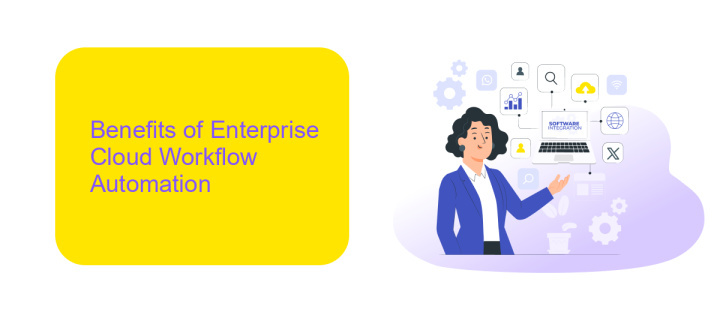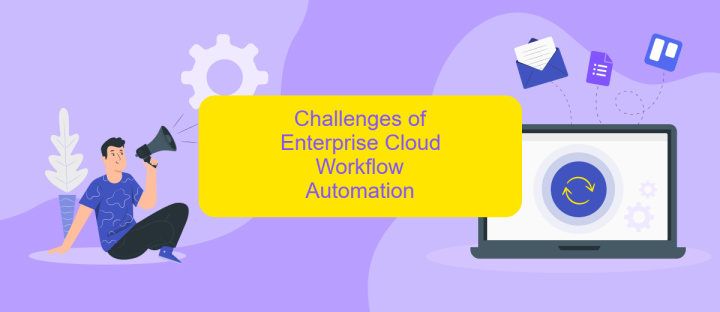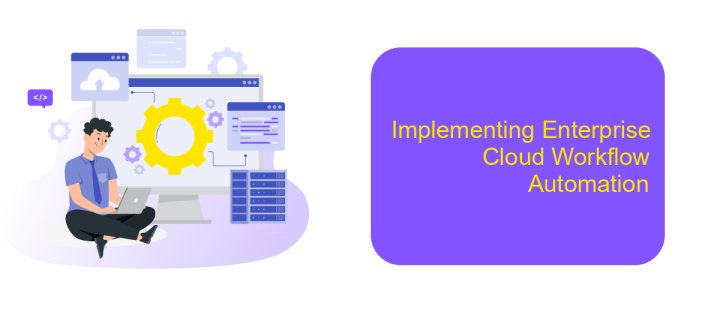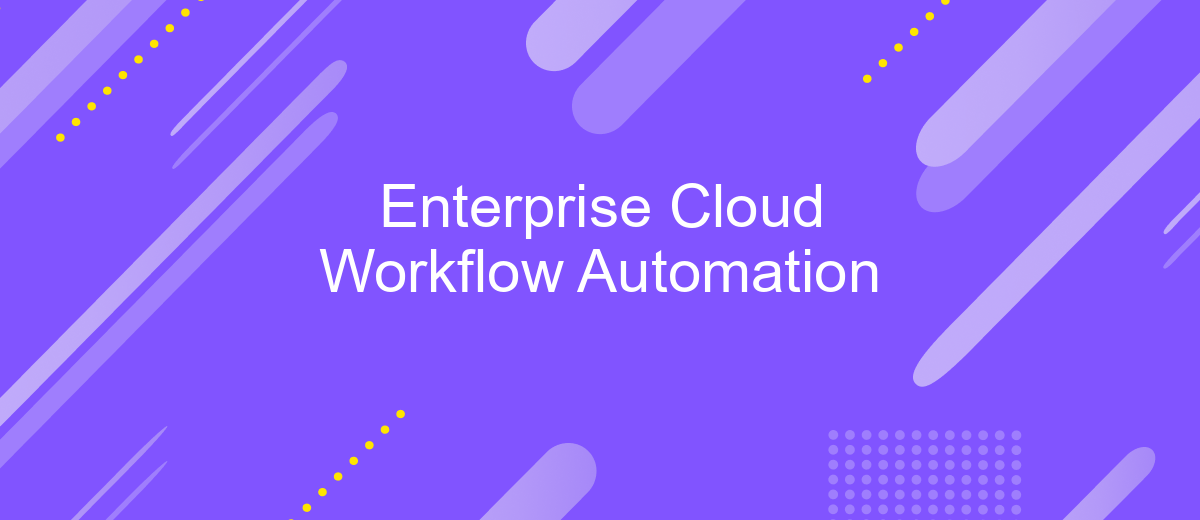Enterprise Cloud Workflow Automation
In today's fast-paced business environment, enterprise cloud workflow automation is revolutionizing how organizations operate. By streamlining processes, reducing manual tasks, and enhancing collaboration, cloud-based automation solutions empower companies to achieve greater efficiency and agility. This article explores the key benefits, implementation strategies, and real-world examples of how enterprises are leveraging cloud technology to transform their workflows.
Defining Enterprise Cloud Workflow Automation
Enterprise Cloud Workflow Automation refers to the systematic process of automating business workflows using cloud-based technologies. This approach leverages the scalability, flexibility, and accessibility of cloud services to streamline operations, reduce manual intervention, and enhance overall efficiency. By automating routine tasks, organizations can focus on strategic initiatives and improve their competitive edge.
- Scalability: Easily adjust resources based on demand.
- Flexibility: Integrate with various cloud services and applications.
- Accessibility: Access workflows from anywhere with an internet connection.
- Efficiency: Reduce manual tasks and human errors.
- Cost-Effectiveness: Lower operational costs through automation.
One of the key aspects of enterprise cloud workflow automation is the integration of different services and applications. Tools like ApiX-Drive facilitate these integrations by allowing seamless connections between multiple platforms without the need for extensive coding. This ensures that data flows smoothly across systems, enabling real-time updates and better decision-making. By leveraging such tools, businesses can create a cohesive and efficient workflow environment that supports their operational goals.
Benefits of Enterprise Cloud Workflow Automation

Enterprise Cloud Workflow Automation significantly enhances operational efficiency by streamlining complex business processes. It reduces manual intervention, minimizing the risk of human error and ensuring tasks are completed consistently and accurately. Automation tools facilitate real-time monitoring and reporting, enabling businesses to make data-driven decisions swiftly. This leads to improved productivity and allows employees to focus on strategic activities rather than repetitive tasks.
Another key benefit is the seamless integration with various applications and services. Platforms like ApiX-Drive simplify the process of connecting different systems, ensuring data flows smoothly across the organization. This integration capability not only saves time but also enhances data accuracy and accessibility. Additionally, cloud-based automation is scalable and flexible, allowing enterprises to adapt to changing business needs without significant infrastructure changes. Overall, enterprise cloud workflow automation drives efficiency, accuracy, and agility, making it a critical asset for modern businesses.
Challenges of Enterprise Cloud Workflow Automation

Enterprise cloud workflow automation offers numerous benefits, but it also presents several challenges that organizations must navigate. These challenges can hinder the effective implementation and optimization of automated workflows, impacting overall efficiency and productivity.
- Integration Complexity: Connecting disparate systems and applications can be complex and time-consuming. Services like ApiX-Drive can simplify this process by offering seamless integration solutions.
- Data Security: Ensuring the security and privacy of data within automated workflows is crucial. Organizations must implement robust security measures to protect sensitive information.
- Scalability Issues: As businesses grow, their workflow automation solutions must scale accordingly. This requires flexible and adaptable systems that can handle increased demands.
- Change Management: Transitioning to automated workflows can be disruptive. Effective change management strategies are essential to ensure smooth adoption and minimize resistance.
- Cost Management: Implementing and maintaining cloud workflow automation can be costly. Organizations must carefully manage these expenses to ensure a positive return on investment.
Addressing these challenges requires careful planning, the right tools, and ongoing management. By leveraging services like ApiX-Drive for integration, implementing robust security protocols, and adopting scalable solutions, organizations can overcome these obstacles and fully realize the benefits of enterprise cloud workflow automation.
Implementing Enterprise Cloud Workflow Automation

Implementing enterprise cloud workflow automation involves streamlining and optimizing various business processes using cloud-based tools and services. This approach not only enhances operational efficiency but also ensures scalability and flexibility, which are crucial for modern enterprises. To begin with, it is essential to identify the workflows that can benefit the most from automation and prioritize them accordingly.
Once the key workflows are identified, the next step is to select appropriate tools and platforms that can facilitate seamless automation. ApiX-Drive, for instance, is a powerful service that allows businesses to integrate various applications and automate data transfer between them without requiring any coding skills. This can significantly reduce manual efforts and minimize errors.
- Identify critical workflows for automation
- Select suitable cloud-based automation tools
- Utilize integration services like ApiX-Drive
- Test and refine automated workflows regularly
After setting up the automated workflows, continuous monitoring and refinement are essential to ensure they operate efficiently. Regularly reviewing the performance metrics and gathering feedback from users can help in making necessary adjustments. By leveraging enterprise cloud workflow automation, businesses can achieve higher productivity, reduced operational costs, and improved overall performance.
Best Practices for Enterprise Cloud Workflow Automation
Implementing enterprise cloud workflow automation requires a strategic approach to ensure efficiency and scalability. Start by mapping out your existing workflows and identifying repetitive tasks that can be automated. Utilize tools like ApiX-Drive to integrate various applications seamlessly, reducing manual data entry and minimizing errors. Establish clear objectives and KPIs to measure the success of your automation efforts, ensuring alignment with business goals.
Security and compliance should be top priorities when automating workflows in the cloud. Implement robust authentication and authorization protocols to protect sensitive data. Regularly update and patch your systems to mitigate vulnerabilities. Additionally, involve cross-functional teams in the planning and implementation phases to ensure that the automated workflows meet the needs of different departments. Continuous monitoring and optimization are essential to adapt to evolving business requirements and technological advancements.
FAQ
What is Enterprise Cloud Workflow Automation?
How can Enterprise Cloud Workflow Automation benefit my business?
What types of processes can be automated?
How do I get started with Enterprise Cloud Workflow Automation?
What should I consider when choosing a workflow automation tool?
Strive to take your business to the next level, achieve your goals faster and more efficiently? Apix-Drive is your reliable assistant for these tasks. An online service and application connector will help you automate key business processes and get rid of the routine. You and your employees will free up time for important core tasks. Try Apix-Drive features for free to see the effectiveness of the online connector for yourself.

